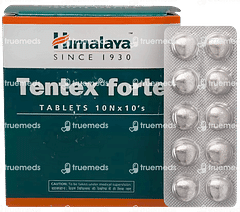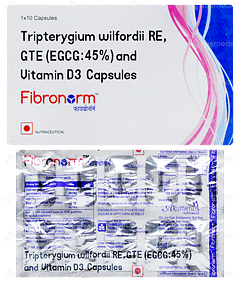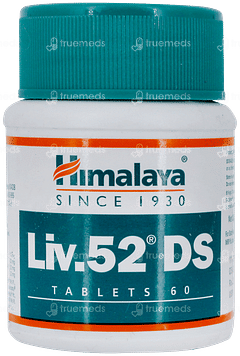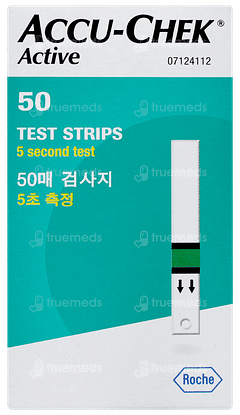Neuropathic Pain
Neuropathic pain, or nerve pain, is a chronic condition caused by damage to the nervous system. It is characterised by shooting, stabbing, burning, or electric shock-like sensations and can be challenging to treat. Various factors, such as diabetes, shingles, multiple sclerosis, and injuries, can lead to neuropathic pain.
Last updated on : 09 Apr, 2025
Read time : 11 mins

Overview of Disease
Neuropathic pain, also known as nerve pain or neuralgia, is a complex and often debilitating condition that affects millions of people worldwide. It is a type of chronic pain that occurs due to damage or dysfunction in the nervous system, which includes the peripheral nerves, spinal cord, and brain. This damage can disrupt the normal transmission of pain signals, leading to unusual and sometimes severe pain sensations. In this article, we will delve into the causes, symptoms, and treatment options for neuropathic pain, providing you with a comprehensive understanding of this condition.
What is Neuropathic Pain (Nerve Pain)?
Neuropathic pain is a long-lasting type of pain caused by damage to the nervous system that processes sensory signals from the skin, muscles, and organs.
This damage can happen due to conditions like diabetes, shingles, multiple sclerosis, chemotherapy, or injuries. When nerves are harmed, they might send incorrect signals to the brain, leading to pain sensations even when there’s no harmful stimulus. For example, a gentle touch or slight pressure might feel like burning or pain.
People often describe neuropathic pain as sharp, shooting, stabbing, burning, or feeling like an electric shock. The intensity can vary from mild to severe, and the pain may be constant or come and go.
Neuropathic pain can make everyday tasks challenging and can affect emotional well-being, lowering the overall quality of life.
In the next section, we’ll discuss the causes of neuropathic pain in more detail.
Key Factors about Neuropathic Pain
| Category | Details |
| Also Referred as | Neuralgia, Nerve Pain |
| Commonly Occurs In | People with diabetes, HIV/AIDS, multiple sclerosis, post-herpetic neuralgia, cancer patients |
| Affected Organ | Nerves, brain, spinal cord |
| Type | Peripheral, Central, Mixed (Peripheral and Central) |
| Common Signs | Shooting, stabbing, burning pain; tingling; numbness; extreme sensitivity to touch; muscle weakness |
| Consulting Specialist | Neurologist, Pain Management Specialist |
| Treatement Procedures | Antidepressants (tricyclic, SNRIs), anticonvulsants (gabapentin, pregabalin), topical lidocaine, capsaicin patches, opioids |
| Managed By |
|
| Mimiciking Condition |
Symptoms of Neuropathic Pain
Neuropathic pain can manifest in various ways, often described by patients as shooting, burning, stabbing, or electric shock-like sensations. The intensity of this nerve pain can range from mild to severe and may be chronic or intermittent in nature.
Key symptoms of neuropathic pain include:
- Shooting, burning, or stabbing pain sensations
- Tingling and numbness in affected areas
- Weakness in the muscles supplied by damaged nerves
- Electric shock-like sensations
- Phantom limb pain in amputated limbs
- Pain intensity ranging from mild to severe
- Chronic or intermittent pain patterns
- Sensitivity to touch (even light touches can feel painful, known as allodynia)
- Increased pain response (pain from stimuli that wouldn’t usually hurt, known as hyperalgesia)
- Temperature sensitivity, such as pain triggered by cold or heat
- Itching or crawling sensations in affected areas
- Spontaneous pain (pain occurring without any stimulus)
- Sleep disturbances caused by persistent discomfort
- Difficulty in performing daily activities due to pain intensity
Recognising the symptoms of neuropathic pain is essential for accurate diagnosis and effective management. Treatment for neuropathy in the feet and other affected areas may involve a combination of medications, physical therapy, and lifestyle changes to alleviate pain and improve nerve function.
If you experience any of these symptoms, it is important to consult with a healthcare professional for proper evaluation and treatment.
Causes of Neuropathic Pain
Understanding the underlying cause of neuropathic pain is crucial for developing an effective treatment plan, which may include medications, therapies, and lifestyle modifications to manage symptoms and improve quality of life.
Key causes of neuropathic pain include:
- Diabetes and metabolic syndrome
- Shingles and other viral infections
- Cancer and chemotherapy side effects
- Neurological disorders like multiple sclerosis and Parkinson's disease
- Stroke and spinal cord injuries
- HIV and autoimmune diseases
- Excessive alcohol consumption
- Physical trauma and nerve compression
- Certain medications and toxins
- Post-surgical nerve damage (e.g., phantom limb pain after amputation)
- Chronic infections, such as Lyme disease and syphilis
- Genetic disorders, such as Charcot-Marie-Tooth disease
- Chronic inflammation, including conditions like sarcoidosis and vasculitis
Prevention of Neuropathic Pain
Preventing neuropathic pain, also known as neuralgia or neuralgic pain, involves a combination of lifestyle modifications and managing underlying health conditions. Here are some key strategies to help prevent nerve pain:
- Maintain a healthy diet rich in fruits, vegetables, whole grains, and lean protein to keep nerves healthy
- Correct vitamin deficiencies, particularly B vitamins (B-1, B-6, B-12), copper, and vitamin E, which are crucial for nerve health
- Avoid alcohol and manage chronic health conditions such as diabetes, kidney disease, and liver disorders to reduce the risk of neuropathy
- Exercise regularly and maintain a healthy weight to support overall nerve function
- Avoid toxins and reduce exposure to harmful substances that can damage nerves
In addition to lifestyle changes, effectively managing underlying conditions is essential for preventing neuropathic pain.
- Controlling blood sugar levels in diabetic patients can help prevent diabetic neuropathy, one of the most common causes of peripheral nerve pain.
- Treating autoimmune diseases, infections like Lyme disease, shingles, HIV, and other conditions that can lead to nerve damage is vital.
In some cases, such as during amputations, specific surgical techniques may be used to help prevent residual limb pain (RLP) and phantom limb pain (PLP). These include targeted muscle reinnervation (TMR), regenerative peripheral nerve interface (RPNI), and epineural ligatures.
By taking a proactive approach to nerve health through lifestyle modifications and appropriate medical management, many instances of neuropathic pain can potentially be prevented.
Diagnosis & Tests
Diagnosing neuropathic pain is a comprehensive process that involves a detailed medical history, physical examination, and various diagnostic tests. The process begins with a thorough review of the patient's medical history and a physical exam to identify symptoms such as burning, tingling, numbness, sharp or stabbing pain, and pain that worsens at night.
The physical exam should include an assessment of motor, sensory, and autonomic phenomena to identify all signs of neurological dysfunction. Sensory disorders are recorded in detail, often using body sensory maps.
Several screening tools and questionnaires are used to distinguish neuropathic from nociceptive pain, including:
- Neuropathic Pain Questionnaire (NPQ)
- ID Pain
- PainDETECT
- Leeds Assessment of Neuropathic Symptoms and Signs (LANSS) scale
- Douleur Neuropathique en 4 Questions (DN4) questionnaire
These tools often combine interview questions with physical tests to achieve higher sensitivity and specificity. Blood tests may be ordered to check for conditions such as diabetes, vitamin B12 deficiency, and other systemic illnesses that could be causing neuropathy.
Imaging tests like MRI or CT scans can be used to look for signs of nerve damage, while nerve function tests such as electromyography (EMG), nerve conduction studies (NCS), and quantitative sensory testing (QST) assess the electrical activity of muscles and the speed and strength of nerve signals.
In some cases, a punch skin biopsy may be performed to assess the density of intraepidermal nerve fibers (IENF), which is indicative of small-fiber neuropathy. Once a diagnosis of neuropathic pain is confirmed, an appropriate management and treatment plan can be developed.
Treatment & Management
The management and treatment of neuropathic pain involve a multidisciplinary approach that includes both pharmacological and non-pharmacological interventions.
1. Pharmacological Treatment
- Antidepressants: Tricyclic antidepressants (TCAs) such as amitriptyline, nortriptyline, and imipramine, along with selective serotonin reuptake inhibitors (SSRIs) like fluoxetine, escitalopram, and dapoxetine, are used to manage neuropathic pain. Additionally, serotonin-norepinephrine reuptake inhibitors (SNRIs) such as duloxetine and venlafaxine are considered effective and are often first-line treatments.
- Anticonvulsants: Gabapentin, pregabalin, carbamazepine, and oxcarbazepine are commonly prescribed anticonvulsants that have been shown to relieve neuropathic pain by stabilising nerve activity.
- Topical Treatments: Topical options include capsaicin cream and lidocaine patches or gels, which can be applied directly to the affected area for localised pain relief.
- Opioids and Analgesics: For severe, refractory cases, tramadol, morphine, oxycodone, or methadone may be considered under strict medical supervision, though they are not typically first-line treatments.
- Local Anesthetics: Medications such as lidocaine and mexiletine can be used for targeted nerve pain relief, often as adjunctive therapy.
2. Non-Pharmacological Treatment
- Physical therapy: Exercises, stretches, and manual therapy techniques can help improve mobility, strength, and function in affected areas.
- Occupational therapy: Adapting daily activities and using assistive devices can help manage pain and improve quality of life.
- Psychological therapy: Cognitive-behavioral therapy (CBT) and other psychological interventions can help patients develop coping strategies and manage the emotional aspects of chronic pain.
- Complementary therapies: Acupuncture, massage, and mindfulness practices may provide additional relief for some patients.
3. Interventional Procedures
In some cases, interventional procedures may be considered for managing neuropathic pain:
- Nerve blocks: Injections of local anesthetics, steroids, or other medications can be used to target specific nerves or nerve roots.
- Spinal cord stimulation: A small device is implanted to deliver low-level electrical signals to the spinal cord, which can help mask pain signals.
- Intrathecal medication delivery: Pain medications are delivered directly into the spinal fluid via an implanted pump, allowing for lower doses and fewer systemic side effects.
The management and treatment of neuropathic pain should be customised to each individual patient, taking into account the underlying cause, symptom severity, and overall health status. A combination of pharmacological, non-pharmacological, and interventional approaches may be necessary to achieve optimal pain relief and improve the quality of life for those living with neuropathic pain.
Expert to Consult
While mild, transient tingling or numbness may not be cause for alarm, certain symptoms warrant prompt medical attention to address potential nerve damage and prevent the progression of neuropathic pain. If you experience any of the following, it's important to see a doctor:
- Unusual tingling, weakness, or pain in your hands or feet
- Severe pain, numbness, or weakness that is rapidly worsening
- Symptoms indicative of nerve damage, such as burning sensations, stabbing pain, or electric shock-like feelings
Seeking early diagnosis and treatment can make a significant difference in controlling neuropathic pain symptoms and preventing further nerve damage. Your doctor can perform a thorough evaluation, identify the underlying cause of your symptoms, and recommend an appropriate treatment plan tailored to your specific needs. Don't hesitate to seek medical care if you suspect you may be experiencing signs of neuropathy.
If you're experiencing neuropathic pain, it's important to consult a neurologist, a specialist in diagnosing and treating disorders of the nervous system. Neurologists are trained to identify the root cause of nerve damage, whether it's related to diabetes, infections, or other conditions. In some cases, a pain management specialist may also be involved to provide advanced pain-relief strategies. For neuropathic pain due to specific causes like cancer or autoimmune diseases, an oncologist or rheumatologist may work alongside the neurologist. Early consultation with the right expert ensures proper diagnosis, effective treatment, and improved quality of life.
Key Takeaways
- Neuropathic pain is caused by damage or dysfunction of the nervous system and can result in burning, stabbing, or shooting pain, tingling, numbness, and other symptoms.
- Lifestyle changes such as a healthy diet, hydration, quitting smoking, reducing alcohol consumption, weight management, proper posture, and ergonomics can help prevent neuropathic pain.
- Regular exercise and physical therapy can improve blood circulation, reduce inflammation, promote nerve healing, strengthen muscles, and improve joint flexibility, thus preventing nerve pain.
- Stress management techniques and managing underlying medical conditions are important aspects of preventing neuropathic pain.
- Seek medical care if you notice any unusual symptoms that could indicate neuropathic pain, especially if you have an underlying condition that increases your risk.
- Early intervention is crucial in managing neuropathic pain effectively and preventing complications.
FAQs
How challenging is it to treat neuropathic pain?
Treating neuropathic pain can be difficult, as it often doesn't respond well to common pain medications. Anticonvulsants, antidepressants, and other co-analgesics may help, but their effectiveness can vary.
What are the symptoms of neuropathic pain?
Neuropathic pain is commonly described as a burning or shooting sensation, accompanied by tingling and numbness. The pain can be constant or intermittent, and hypersensitivity to stimuli may occur.
Is it possible for neuropathy to resolve on its own?
While neuropathic pain can sometimes go away without treatment, it is often a chronic condition. Addressing the underlying cause may help reduce or eliminate the pain.
Are there any permanent solutions for nerve pain?
Currently, there is no definitive cure for neuropathic pain. However, a combination of medications, physical therapy, psychological treatment, and sometimes invasive or implantable devices can effectively manage the symptoms.
Is it possible to overcome neuropathic pain?
In some cases, recovery from neuropathic pain is possible, particularly if the underlying cause is addressed. Effective treatment can help improve quality of life and maintain normal functioning despite the pain.
What dietary changes can help repair nerve damage?
While no single food can directly repair nerve damage, a balanced diet rich in omega-3 fatty acids, vitamins B and E, and antioxidants can support overall nerve health.
Which vitamins are most beneficial for nerve repair?
Vitamins B and E are often recommended for supporting nerve health. Vitamin B12 is particularly important for the production of myelin, which protects nerve fibres.
References
Colloca, L., Ludman, T., Bouhassira, D., Baron, R., Dickenson, A. H., Yarnitsky, D., Freeman, R., Truini, A., Attal, N., Finnerup, N. B., Eccleston, C., Kalso, E., Bennett, D. L., Dworkin, R. H., & Raja, S. N. (2017). Neuropathic pain. Nature Reviews Disease Primers, 3(1), 17002. https://doi.org/10.1038/nrdp.2017.2
Gilron, I., Baron, R., & Jensen, T. (2015). Neuropathic pain: Principles of diagnosis and treatment. Mayo Clinic Proceedings, 90(4), 532–545. https://doi.org/10.1016/j.mayocp.2015.01.018
Jensen, T. S., Baron, R., Haanpää, M., Kalso, E., Loeser, J. D., Rice, A. S. C., & Treede, R.-D. (2011). A new definition of neuropathic pain. Pain, 152(10), 2204–2205. https://doi.org/10.1016/j.pain.2011.06.017
National Institute of Neurological Disorders and Stroke. (2020). Peripheral neuropathy fact sheet. https://www.ninds.nih.gov/health-information/patient-caregiver-education/fact-sheets/peripheral-neuropathy-fact-sheet
Scholz, J., Finnerup, N. B., Attal, N., Aziz, Q., Baron, R., Bennett, M. I., Benoliel, R., Cohen, M., Cruccu, G., Davis, K. D., Evers, S., First, M., Giamberardino, M. A., Hansson, P., Kaasa, S., Korwisi, B., Kosek, E., Lavand'homme, P., Nicholas, M., … Treede, R.-D. (2019). The IASP classification of chronic pain for ICD-11: Chronic neuropathic pain. Pain, 160(1), 53–59. https://doi.org/10.1097/j.pain.0000000000001365
Watson, J. C., & Sandroni, P. (2016). Central neuropathic pain syndromes. Mayo Clinic Proceedings, 91(3), 372–385. https://doi.org/10.1016/j.mayocp.2016.01.017
Check Related Salts
Latest health articles
Top Health Essentials
Disclaimer
Top-Selling Medicines:
...View more
Top-OTC medicines:
...View more
Company
About UsHealth ArticleHealth StoriesDiseases & Health ConditionsAll MedicinesAll BrandsNeed HelpFAQSubscribe
Registered Office Address
Grievance Officer
Download Truemeds

Contact Us
Our customer representative team is available 7 days a week from 9 am - 9 pm.
v3.7.10
Our Payment Partners























































